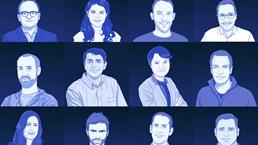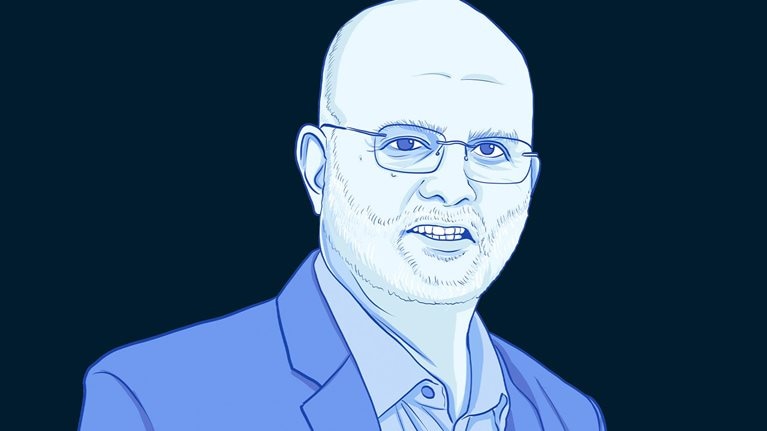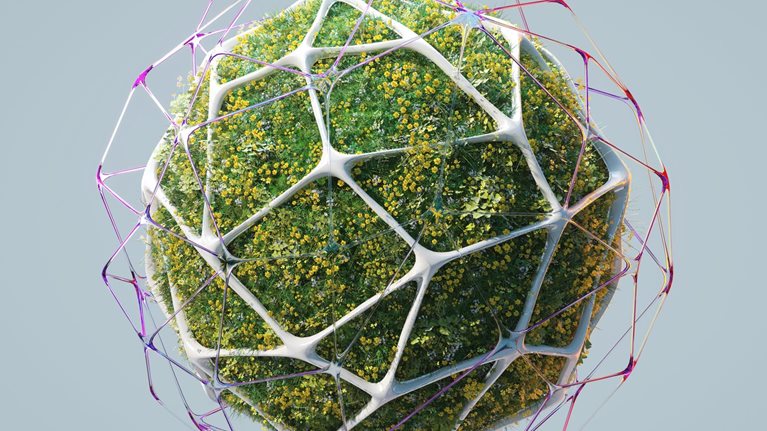Consumers increasingly demand sustainable products and services,1 and McKinsey research shows that more than 90 percent of businesses plan to meet this demand in part by building new businesses.2 One new business in this space is C1 (Carbon.one), a climate technology start-up that uses a patented catalysis process to produce green methanol as fuel for ships or as feedstock for the chemical industry.
In a conversation with McKinsey’s Markus Berger-de León and Jerome Königsfeld, Christian Vollmann, cofounder and CEO of C1, reflects on his experiences as a serial entrepreneur and his discovery that a social cause was necessary to ensure his long-term motivation. He also talks about his transition from internet start-ups to climate tech and the importance of hiring diverse teams with complementary skills, which are critical to bringing new technologies from research to industrialization.
Jerome Königsfeld: You founded and built several successful businesses, including eDarling and nebenan.de, before launching C1. Why did you choose an entrepreneurial career path, and what did you learn along the way?
Christian Vollmann: It all started with my internship at Alando in 1999 during the big internet bubble. I was fascinated by the spirit in Berlin and the industry as a whole.
The bubble burst when I was leaving university, and it was difficult to start something, so I decided to take a detour and join Jamba, where I started iLove, an online dating portal, from scratch. After some years, the company became profitable and was sold. It made me realize that while founding and growing a company was inspiring, having true equity in the business—being fully involved in decisions and the company’s success—was also important.
I then founded my own company, called MyVideo, which I scaled and then sold in 2007. I was exhausted from building MyVideo as the only founder, and the experience made me realize that you need cofounders to go through these intense adventures of building a company, so I wanted to start my next business with a founding team.
I founded eDarling, an online dating platform, with former classmates from WHU [a German business school]. We expanded the business to 23 countries and brought it to the NYSE. The fact that the founding team had very similar characteristics helped us have a high level of harmony, but we were not very complementary as a team. For my future endeavors, I wanted to set up more-diverse teams to leverage more skills, which can lead to better decisions.
Jerome Königsfeld: Once you realized that you wanted to become a part of the climate tech sector, how did you screen the market to find the right technology?
Christian Vollmann: We generally have great scientists and technology in Germany, but we are chronically bad at commercializing the tech. Most technologies never get beyond the third or fourth readiness level.3 What is really missing is interdisciplinary teams. Experienced entrepreneurs need to come together with successful scientists and engineers to build something together.
I went looking for innovations and researchers but realized that with my knowledge, it was impossible to systematically screen the market. I was eventually introduced to Marek Checinski, who is the inventor of our current technology, by our mutual friend Dirk Radzinski, who is now chairman of the board at C1. Dirk once started the technology transfer initiative at the Humboldt University of Berlin and is very well connected in the space between research and entrepreneurship. When he saw Marek’s patent and recognized the technology’s potential to reduce CO2 emissions, he introduced us. At that point, the technology was at level 4, meaning that it was generally validated in a lab environment.
Markus Berger-de León: How did you validate the technical concept and functionality?
Christian Vollmann: After I met Marek, it took nine months to understand the technology, find the right founding team, finance further experiments, and take the technology to the next maturity level—as well as to make sure it also worked in an industrial setup.
To reach level 5, which involves proving that the technology works outside a laboratory, we rented reactors from partner companies to test it. It was important for me to see if the technology would work at level 5 before I would want to launch the company. I also wanted to understand the technology well, to see its advantages, limitations, and challenges. So we involved external experts like Dr. Jürgen Hambrecht, the former CEO of BASF, and prominent professors in the field, who were more familiar with the technology and had a good understanding of it. After going through the details, all the experts were convinced, invested, or even became a part of our advisory board. Those were great proof points for our business.

Shaper interviews
Jerome Königsfeld: What are typical applications for your green methanol?
Christian Vollmann: For one, the shipping industry—container ships and cruise ships that emit hundreds of millions of metric tons of CO2 every year—is set to benefit greatly from the use of green methanol as fuel. Engine manufacturers are already producing dual-use engines that can process methanol, and the first of these ships will be delivered in the third quarter of this year.
Of course, the chemicals industry is also expected to benefit from methanol as a nonfossil input for carbon-based chemical products such as plastics, adhesives, paint, insulation, and more. Methanol can also be used as a fuel source in the transportation industry. Buses and trucks in China and India already use a blend of gasoline and methanol.
In the furniture industry, methanol can be used as a source of nonfossil glue in the production of CO2-neutral furniture.
Jerome Königsfeld: What will be the business model?
Christian Vollmann: We haven’t decided on our final business model yet. However, we will most likely become a technology provider, licensing our patented technology and selling the necessary catalyst for it.
What is clear is that we must build a very scalable business model. At the end of the day, we want to have as much deployment as possible as quickly as possible to reduce CO2 emissions. We believe that the greatest impact will be achieved by having multiple companies build facilities to save CO2 at the same time.
Markus Berger-de León: Climate tech businesses such as yours require longer time horizons than classic internet businesses. How did you secure venture capitalist [VC] funding for your idea?
Christian Vollmann: The VC market has changed in the past five years, with smaller tech VCs now searching for climate tech opportunities from seed to series A tickets. There is now a greater understanding that it is essential for the global community to achieve net-zero emissions.
While some technologies require a rollout, others are still to be developed. Further investment is necessary in both cases. However, technology is a risk. It involves reaching high levels of technology readiness, and usually each level is more difficult to reach than the previous one.
We use a clearly defined technology road map to track and report our targets. We are about to reach level 6, which means fully automated, fully continuous operation for at least one week. Level 7 will be supported by public funding and consist of a pilot project under real conditions in a chemical park next year. Level 8 is commercial demonstration and is targeted for 2026. At that point, we will also select our final business model.
The total amount of VC investment we have received so far is €13 million, led by Planet A, SquareOne, and Maersk Growth.
Jerome Königsfeld: As a founder who has experience in both classic VC-funded internet start-ups and asset-heavy climate tech companies, what are some things that you wish you had known in advance, and what were the biggest challenges you faced with C1?
Christian Vollmann: In asset-heavy companies, it takes longer to develop a technology and to bring it to the market. This means that you must commit for the long term, and so does your team. You need at least five years before you have commercial traction. Before that, people will tell you that you have a great idea but that you should come back once you’ve made some progress. This risk is something very few people are willing to take on. You need partners who understand this and are willing to take on the risks with you. You also need to constantly think about how you can prove that the technology works.
Second, you need an extremely diverse team with different skill sets and expertise in the field. This diversity can be a strength, but it also poses a challenge when it comes to creating a cohesive team. Interpersonal dynamics can be difficult when people come from different backgrounds and have different perspectives. You need to find a way to bring everyone together and make sure everyone is on the same page.
Last, I’ve always been the end user in my previous ventures. I could see myself using the product or service and could understand the user’s perspective. This time, it’s different. I will never personally produce this technology, and I can’t fully understand it. That’s why it’s crucial that you have full trust in your cofounders. For example, you won’t always be able to judge the scientific progress, but you must have full trust that your cofounders are managing it. I’m learning as I go, but I don’t have that direct connection to the end user. This is something new for me and something I’m still adjusting to.


